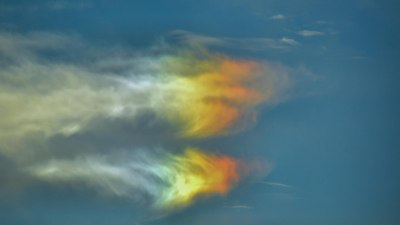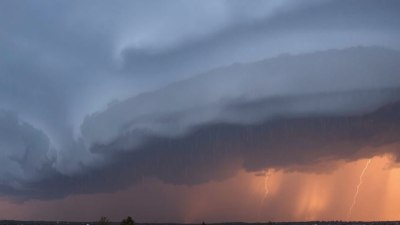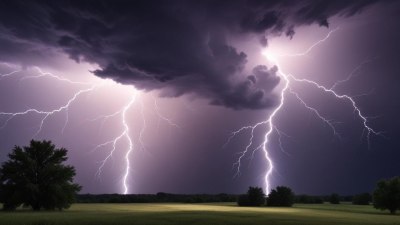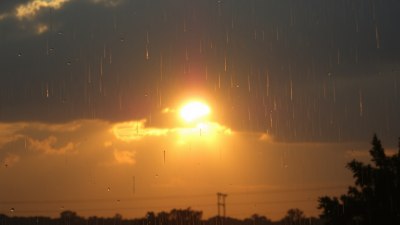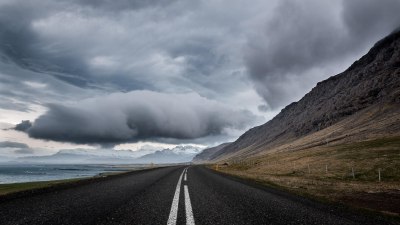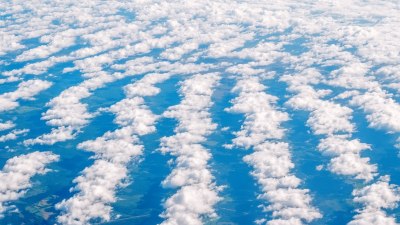The Rarest Weather Phenomena Explained
Explore the world's rarest weather phenomena and understand their causes and effects.
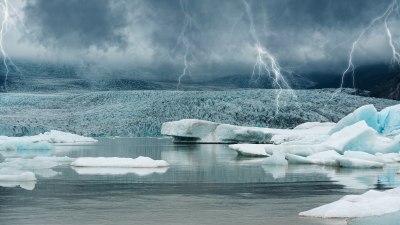
Weather phenomena can often be as mesmerizing as they are fleeting, with some events being so rare that they capture the imagination of meteorologists and enthusiasts alike. In this extensive exploration, we delve into some of the rarest weather phenomena known to humankind, discussing their origins, how they occur, and the science behind them. From phenomena that bring beauty to the sky to those that pose significant dangers, each event contributes to the complex tapestry of Earth's atmosphere.
1. Ball Lightning
Ball lightning is one of the most enigmatic and rare meteorological events, often characterized by glowing, spherical shapes floating in the air. Reports of ball lightning typically occur during thunderstorms, making it particularly intriguing given its transient nature and the lack of scientific consensus regarding its formation mechanism. Some theories suggest that it may be related to plasma, while others postulate chemical reactions occurring in the atmosphere. Despite numerous sightings, especially from farmers and residents in rural areas, the elusive nature of ball lightning has made it difficult to study, leaving scientists puzzled.
2. St. Elmo's Fire
An atmospheric phenomenon, St. Elmo's Fire occurs during thunderstorms when a high-voltage electric field ionizes the air, creating visible blue or violet glows at the tips of pointed objects. Sailors and aviators have historically reported witnessing this phenomenon on masts, aircraft, and even the tips of grass. Despite the enchanting display, St. Elmo's Fire is not fire in the traditional sense but rather a sign of electrical activity in the surrounding atmosphere. While it can seem eerie or supernatural, St. Elmo's Fire is a harmless phenomenon that serves as an indicator of atmospheric electricity.
3. Fire Whirls
Fire whirls, also known as fire tornadoes or fire devils, occur when intense heat from a fire causes a vertical column of air to spiral upwards, forming a whirlpool of flames. These phenomena can occur during wildfires or intense burning events. Fire whirls can reach impressive heights and move rapidly, leading to significant danger for anyone nearby. The combination of heat and wind plays a crucial role in their formation, and fire whirls have been observed to carry embers long distances, igniting new fires in their path.
4. Sundogs
Sundogs, or parhelia, are bright spots that appear on either side of the sun, typically forming in cold climates where ice crystals are suspended in the atmosphere. The sunlight refracts through the ice crystals, creating the dazzling optical effects that appear as halos or bright spots near the sun. While they can be striking and beautiful, sundogs are relatively common compared to some other rare phenomena. They can be a sign of impending weather changes, as the presence of ice in the atmosphere often indicates approaching storms.
5. Firenado
The firenado is a rare phenomenon that combines elements of fire whirls with tornado-like behavior. These rotating columns of fire can develop during severe wildfires when conditions are right for the formation of tightly organized fire vortices. Like fire whirls, firenados can be destructive, creating intense heat and unpredictable fire behavior, but they differ in terms of the combination of the fire and wind. Their formation requires high energy, typically found in extreme fire situations coupled with strong winds.
6. Ice Tsunami
Iceland and certain regions of Canada have experienced a rare phenomenon known as an ice tsunami, where massive sheets of ice are propelled across land or water due to the movement of water beneath them. This can happen when ice melts during a rapid warming period or during sudden rainfall events that increase water levels. Although rare, ice tsunamis can cause significant damage to structures and ecosystems, especially in coastal areas where ice movement can lead to severe flooding. The sheer power of an ice tsunami can rival that of a more traditional water tsunami.
7. Atmospheric Rivers
Atmospheric rivers are another unique phenomenon involving narrow corridors of concentrated moisture in the atmosphere. These long, narrow bands of moisture can transport vast amounts of water vapor over thousands of kilometers and, when they make landfall, result in heavy precipitation and extreme weather events. While they are not as visually striking as other phenomena, their ability to create dramatic shifts in weather patterns makes them a critical subject for meteorological study. Atmospheric rivers are responsible for both beneficial rains and destructive floods across many regions.
8. The Brocken Spectre
The Brocken spectre is a rare optical phenomenon that occurs when a person stands on a mountain peak and looks down into mist or clouds, casting a shadow that appears to be enormous and accompanied by a halo. This ghostly figure can seem ethereal, often captivating those who experience it. It requires specific lighting conditions and atmospheric clarity to manifest, explaining its rarity. The phenomenon has inspired folklore and superstitious beliefs, as many hikers have reported feeling an otherworldly connection during such sightings.
9. Blood Rain
Blood rain refers to a phenomenon in which rain appears red or brown, typically due to the presence of rust-colored dust or microorganisms. This unusual event can occur in various parts of the world and often raises significant intrigue and concern when observed. Scientists attribute blood rain to factors like desert dust, algae blooms, and pollution, leading to widespread debates and studies about its origins. Its striking appearance can evoke fear and wonder and is sometimes accompanied by increased humidity and particularly vivid sunsets.
10. Lenticular Clouds
Lenticular clouds are stationary cloud formations that typically form over mountain ranges or other topographical features where moist air is lifted rapidly. Their smooth, lens-like appearance can resemble flying saucers, leading to many myths and sightings of UFOs. Lenticular clouds can indicate turbulent weather conditions and often signal incoming storms, although witnessing them can be a spectacular experience. They serve as a reminder of the atmospheric processes at work, as air is forced upwards and creates these captivating formations.
11. Snow Rollers
Snow rollers are a rare phenomenon that occurs when snow is blown along the ground in such a way that it initially gathers into elongated cylindrical shapes before rolling; they can resemble small snowballs or logs. These whimsical formations tend to occur in specific conditions with the right temperature and snow consistency, often arresting attention during winter. The sight of snow rollers can be magical and leads many to wonder about the unique conditions needed for their creation.
12. Waterspouts
Waterspouts are tornadoes that occur over water, forming when cold air moves rapidly over warm water. Unlike their land counterparts, waterspouts tend to be weaker and usually die out once they make contact with land. They manifest as swirling columns of vapor, often accompanied by rough waters and dark clouds. Though less destructive than land tornadoes, waterspouts can pose significant dangers to boats and coastal areas. They are a captivating display of nature's power and can form relatively quickly under the right atmospheric conditions.
13. Green Sky
People often associate severe thunderstorms with green-tinted skies. The unusual hue occurs due to the way light scatters during certain storm conditions. This striking visual serves as a warning sign, indicating that a severe thunderstorm, tornado, or hail event is likely to follow. The greenish sky is a result of the sun setting behind the thick, dark clouds prevalent during severe weather conditions, creating a menacing and compelling atmosphere that has captured the attention of meteorologists and storm chasers for decades.
14. Ice Storms
Ice storms are episodic events characterized by freezing rain that accumulates on surfaces, creating layers of ice. These storms can disrupt transportation, damage power lines, and lead to significant hazards. The rarity of ice storms in some regions increases their mystique, especially for those who have not experienced such phenomena. Each ice storm carries unique impacts depending on the landscape and local climate conditions that affect the nature and thickness of the ice accumulation.
15. Red Sprites and Elves
Red sprites and elves are high-altitude electrical phenomena that appear above thunderstorms. Sprites appear as red flashes or glowing formations, while elves are characterized by their expanding, pulsating ring shapes. Both phenomena remain relatively rare and are difficult to observe without specialized equipment. Predicting and studying these occurrences has become feasible due to advancements in lightning detection technology, shining light on some of the mysteries associated with them. Their ethereal characteristics often intrigue scientists and sky watchers alike, inspiring research into unexplored atmospheric phenomena.
16. Snow Pillows
Snow pillows are rare and unusual formations where snow accumulates in dome-like shapes beneath tree branches or other obstructions. These structures can vary in size and may create breathtaking winter landscapes, though they require specific conditions and precipitation patterns to form. Snow pillows demonstrate the intricate balance of physics and meteorological conditions, as they require enough snow accumulation and surrounding temperatures to maintain their shape without collapsing. They can be a whimsical reminder of nature's wonders during winter.
17. Halo Effects
The halo effect is an optical phenomenon caused by the refraction of sunlight through ice crystals in the atmosphere. Halos can appear as bright rings around the sun or moon and may occur in various forms, including sun dogs, which were mentioned earlier. The chance of seeing halos increases in cold weather, often preceding storms or changes in the atmosphere. These captivating visual displays have been interpreted in various cultures throughout history, often as signs of impending weather changes.
The rarity of these weather phenomena makes them fascinating subjects of study and curiosity. While some may enchant, others pose potential threats, emphasizing the diversity of Earth's atmosphere and the intricate interactions within it. Understanding these unique occurrences not only enriches our knowledge of meteorology but also deepens our appreciation for the complexities of weather and the beauty that can emerge from it. As we continue to learn and explore, we may uncover more insights into the mysteries encompassing our world.
